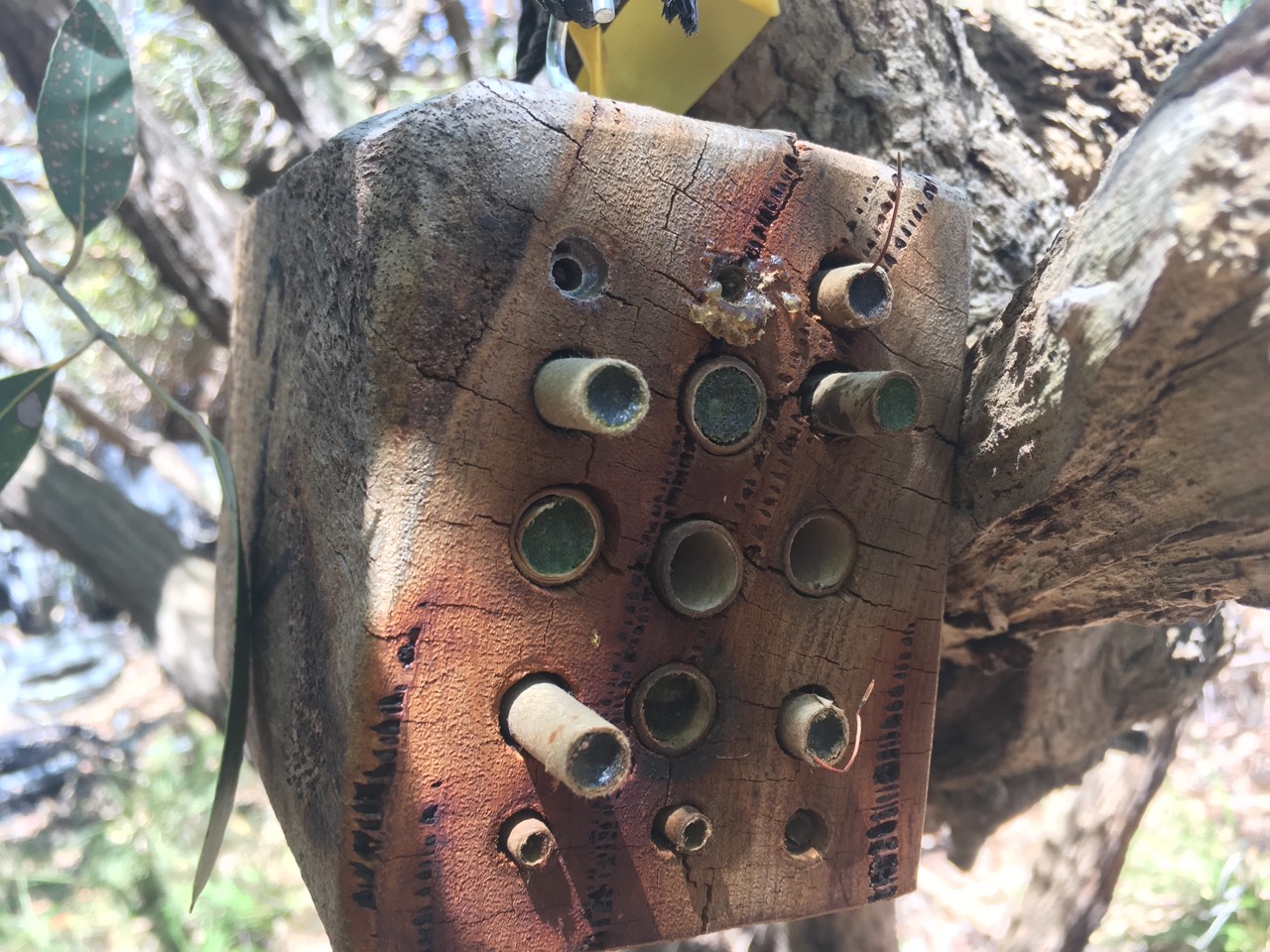Native bees nesting in Dr Kit Prendergast’s home garden bee hotels. Photos: Dr Kit Prendergast.
With more than 2000 native bee species in Australia, increasing numbers of home gardeners are keen to attract them into their gardens, particularly if they favour Australian natives.
However native bee expert Dr Kit Prendergast says many bee hotels are just not fit for purpose.
“There are many bad designs out there, both from mass-producer commercial stores and people in the community who follow advice in magazines or on social media about bee hotels,” she said.
“These bee hotels are not built based on research into what makes for a good bee hotel.”

Dr Prendergast is worth listening to — she holds a PhD in wild bee ecology from Curtin University and is a post-doctoral researcher at the University of Southern Queensland.
“The problem with many of these bee hotels is that they are designed poorly for native bees, meaning that few if any native bees will use them,” she said.
“Instead, lizards, spiders and wasps will — which is OK, but not the aim of the game if we are trying to encourage native bees to our gardens, and certainly not if we are trying to boost native bee populations.
“Even worse, some are from toxic materials, or facilitate spread of disease and parasites.”
Dr Prendergast said she had researched bee hotels for years by reading published literature, and designing and monitoring her own bee hotels across WA and in the eastern states.

“My research has since been published in numerous peer-reviewed articles,” she said.
“My book, ‘Creating a Haven for Native Bees’ distils all the information about optimal bee hotel design, and what to avoid, in an easy to digest, engaging format, with full colour images on every page.
“It additionally has information about the types of native bees that use bee hotels, and the main species that use bee hotels.”
Dr Prendergast said her book also had a section on the best flowers for native bees.
“You can’t install bee hotels in an area bereft of native flowers and expect native bees will nest if they have no food!” she said.
“I include bee hotel idea inspiration, and also a section on how to help ground-nesting native bees which don’t use bee hotels.”

Properly designed bee hotels:
- Can increase populations of solitary cavity-nesting bees, especially when there are shortages of trees with little holes created by wood-boring beetles (what they naturally nest in)
- Can attract native bees to your garden, where they can pollinate wildflowers, and some herbs
- Allow you to observe these lovely creatures up close, with no fear of being stung (they are not aggressive and defend their nests, unlike honey bees)
- Are a great option for citizen science projects
- Are a practical, easy to implement tool to help native bees




